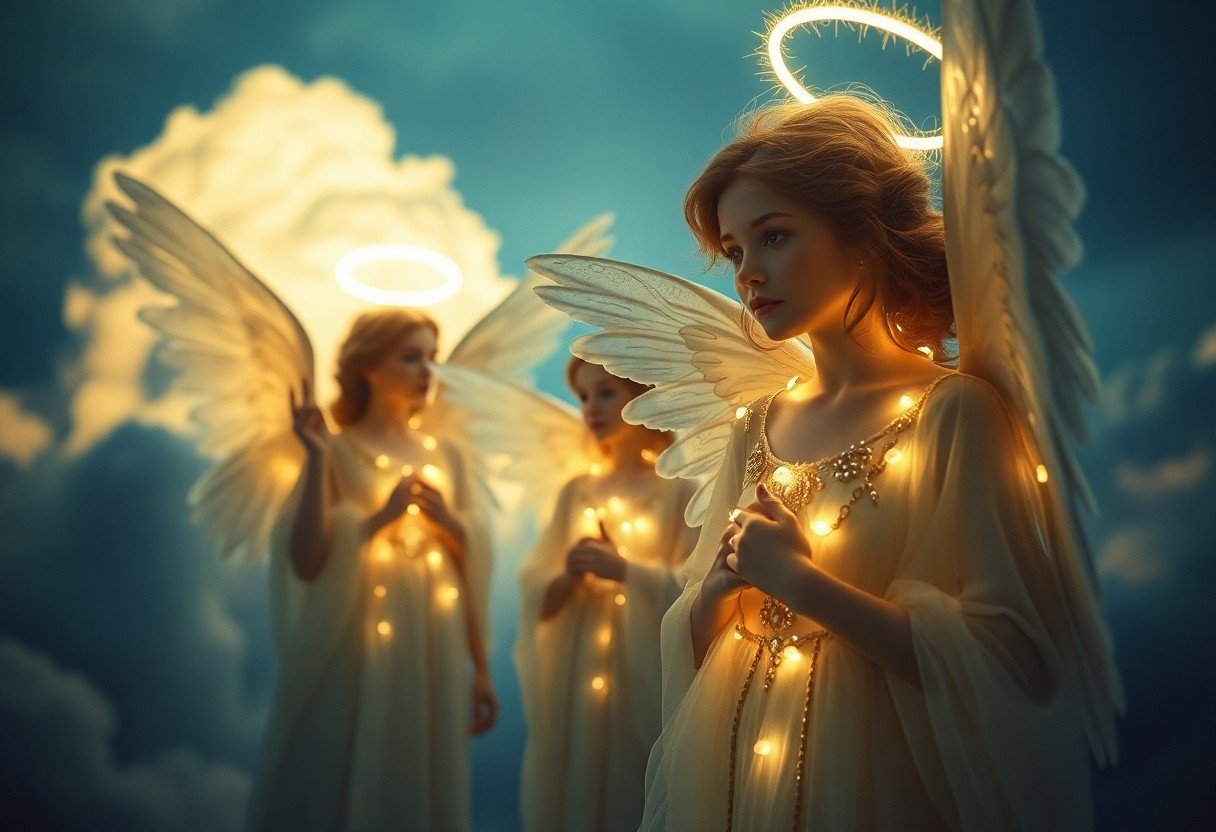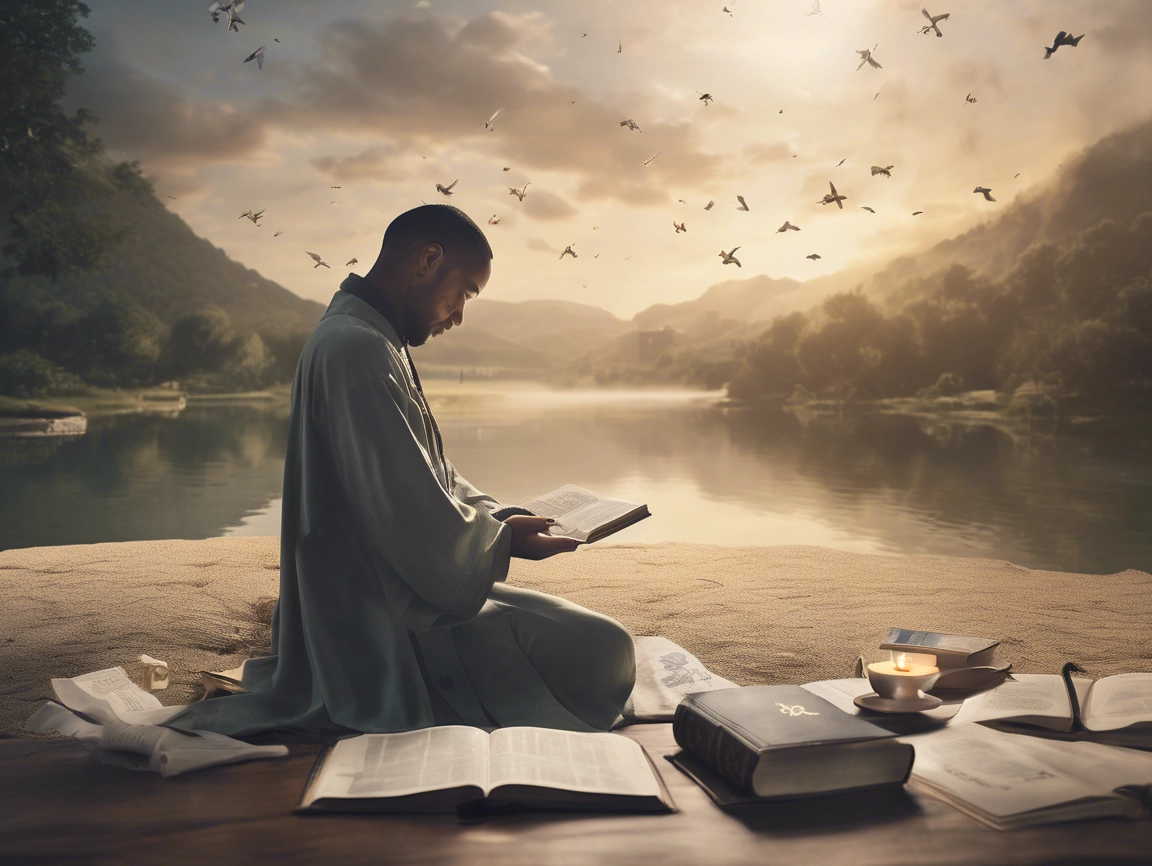Most people envision angels as ethereal beings with wings and halos, yet their appearance varies across cultures and religious texts. You might find yourself wondering if these celestial beings truly align with your imagination or if there is a deeper significance to their manifestations. In this blog post, you will uncover the diverse descriptions of angels from historical, spiritual, and artistic perspectives, offering a rich understanding of how these divine figures are perceived throughout time. Prepare to explore the intriguing characteristics and symbolism that define what angels look like.
Historical Perspectives on Angelic Appearances
Before delving into how angels have been perceived throughout history, it is important to understand that their appearances have varied greatly based on cultural, religious, and artistic interpretations. From the ethereal beings of ancient civilizations to the more defined personas in modern times, the representation of angels reflects the evolving beliefs and values of societies over time.
Ancient Texts and Depictions
One of the earliest sources of angelic imagery can be found in ancient texts such as the Bible, where angels are often described as messengers of God. These descriptions, though sometimes abstract, laid the groundwork for how you might visualize angels—often as radiant, human-like figures cloaked in light or atmospheric theophanies, embodying divine authority and protection.
Cultural Variations in Angel Imagery
Depictions of angels vary remarkably across different cultures and artistic traditions. In some cultures, they are portrayed as seraphim with multiple wings, embodying majesty and power, while in others, they appear as more humanized figures conveying empathy and guidance. Each variation reflects the values and attributes that a particular culture associates with the divine.
Angels across cultures serve not only a spiritual purpose but also embody societal ideals. In Eastern traditions, for instance, celestial beings may symbolize harmony and balance, while in medieval European art, you might see them dressed in ornate robes symbolizing purity and divine love. By exploring these variations, you deepen your understanding of how cultural beliefs shape your perception of the divine and the messages you receive from these celestial beings.

Biblical Descriptions of Angels
It is said that angels in the Bible are often depicted in a variety of forms and appearances, transcending human understanding. Descriptions range from beings that resemble humans to awe-inspiring entities with unique features, reflecting their divine nature. These celestial messengers serve important roles in scripture, often providing guidance, protection, and revelation to humanity.
Cherubim and Seraphim
Angels like Cherubim and Seraphim hold distinct appearances in biblical texts. Cherubim are often described as having multiple faces and wings, symbolizing their guardian role over sacred spaces. Seraphim typically feature six wings and are associated with purity and the worship of God, as seen in their role around the divine throne.
The Appearance of Gabriel and Michael
About Gabriel and Michael, two of the most recognized angels in the Bible, they are depicted with human-like features yet radiate a powerful presence. Gabriel, known as a messenger, appears with an imposing stature and is sent to deliver important news, while Michael, the warrior angel, is portrayed as a fierce protector against evil.
Biblical accounts highlight that Gabriel’s encounters with humanity often involve omens and profound revelations, showing his role as a divine communicator. In contrast, Michael’s appearances illustrate bravery and strength, often engaging in spiritual warfare. Both angels not only bear significant responsibilities but also serve as powerful symbols of God’s will and protection in your spiritual journey.

Artistic Representations of Angels
Some of the most captivating artistic representations of angels come from a variety of cultures and historical periods. Artists have long depicted these celestial beings in many forms, from the divine and majestic to the ethereal and delicate. You will find that these interpretations often reflect the societal beliefs and values of their times, providing a glimpse into humanity’s long-standing fascination with angelic figures.
Renaissance Interpretations
For artists of the Renaissance, angels often embodied both beauty and divine grace. You would notice that they were frequently portrayed with flowing robes and idealized features, emphasizing their celestial nature. Iconic works from this era, like those of Raphael, showcase angels as bearers of light, serving as mediators between the heavens and earth, inviting you to contemplate their sublime presence.
Modern Depictions in Media
An increasing number of modern media portray angels with varied interpretations, shifting from the traditional motifs to more contemporary styles. You might see them depicted in movies, television shows, and literature, often as complex characters who reflect modern dilemmas and ideologies.
Considering the evolution of angelic depictions, you will find that contemporary representations often emphasize individuality and personal struggle. In films and books, angels are sometimes portrayed as guardians or even anti-heroes, revealing a wider range of emotional depth and moral complexity. This shift may resonate with your own experiences and beliefs, showcasing angels not just as divine beings, but also as relatable figures grappling with their own challenges. Ultimately, modern interpretations allow you to connect with these celestial symbols in more meaningful ways, fostering a personal relationship with the concept of angelic presence in your life.
Symbolism of Angelic Features
Despite their ethereal nature, angels are often depicted with distinctive features that hold deep symbolic meaning. These features not only reflect their divine purpose but also serve as a bridge between the celestial and earthly realms. From radiant appearances to specific attributes, understanding these symbols can enhance your perception of angelic beings and their roles in your spiritual life.
Wings and Light
Along with their celestial origins, angels are most commonly recognized by their wings and the light that emanates from them. Wings symbolize their ability to transcend physical boundaries and travel between heaven and earth, while their radiant light represents purity, divine presence, and the illumination of truth. This imagery speaks to the protective and guiding nature of angels in your life.
Gender and Human Characteristics
By examining the representations of angels, you will notice that they often exhibit human characteristics, including gender. While angels are typically considered genderless beings, they may take on male or female forms to communicate more effectively with you, reflecting attributes that resonate with your perception of divinity.
Even though angels are fundamentally spiritual entities, their representation with human characteristics can help you relate to them on a more personal level. This duality serves to create a sense of comfort and familiarity, making it easier for you to connect with these divine messengers. By embodying distinct gender traits or human emotions, angels become accessible and relatable, allowing you to engage with their guidance more fully in your life.
Theological Implications of Angelic Form
Not all interpretations of angelic forms align with the common images of winged beings. The portrayal of angels in various scriptures often emphasizes their purpose and attributes rather than their physical appearance. By assessing various theological perspectives, you can gain insights into how these beings serve as messengers or agents of divine will and reflect the spiritual hierarchy within religious traditions.
Angelology in Different Religions
Beside Christianity, many religions have their own rich traditions surrounding angels. In Islam, for instance, angels (Malak) are seen as obedient servants of God who perform specific functions, such as delivering revelations. Similarly, in Judaism, angels act as intermediaries and guardians, emphasizing their roles across different cultures and belief systems. Exploring these various interpretations can deepen your understanding of angels’ significance within diverse spiritual contexts.
The Role of Angels in Spiritual Beliefs
Spiritual seekers often find comfort in the belief that angels provide guidance and protection throughout life’s journey. You may rely on angels during times of uncertainty or distress, viewing them as benevolent beings who help navigate challenges and illuminate your path. Their presence can serve as a reminder of the connectivity between the divine and human experiences.
Considering the role of angels in spiritual beliefs allows you to appreciate how various cultures view the connection between the earthly and heavenly realms. Believers often turn to angels for support, believing that these divine entities offer wisdom and reassurance. This connection not only fosters a sense of peace but also reinforces the belief in a greater spiritual order and the idea that you are never truly alone on your journey.
Contemporary Views on Angels
For many today, angels are seen not just as religious figures but as comforting symbols of hope and guidance. This modern interpretation blends traditional beliefs with personal views, reflecting a diverse understanding of what angels represent. You may find that many individuals perceive angels as messengers of love and support, transcending cultural and spiritual boundaries while maintaining their ethereal essence.
Spirituality and Personal Experiences
Experiences with angels often shape your understanding and beliefs about these celestial beings. Many individuals report feeling a profound connection during moments of crisis or transformation, prompting them to share their stories of encounters that seem both real and deeply emotional. These experiences not only inspire personal growth but also reaffirm the belief in a higher power watching over you.
Angels in Popular Culture
Angels have become prominent figures in popular culture, capturing your imagination through films, literature, and art. Their portrayal often blends the traditional with the fantastical, making them relatable and accessible. You may find representations of angels in various media, reflecting society’s evolving spirituality while illustrating timeless themes of protection, redemption, and love.
At the heart of popular culture, angels play an necessary role in storytelling, symbolizing hope and guidance during tumultuous times. Movies, television shows, and books frequently depict angels as guardians or personal guides, making them familiar characters in modern narratives. As these representations evolve, they resonate with your experiences and beliefs, often encouraging reflection on spirituality and the unseen forces in your life.

